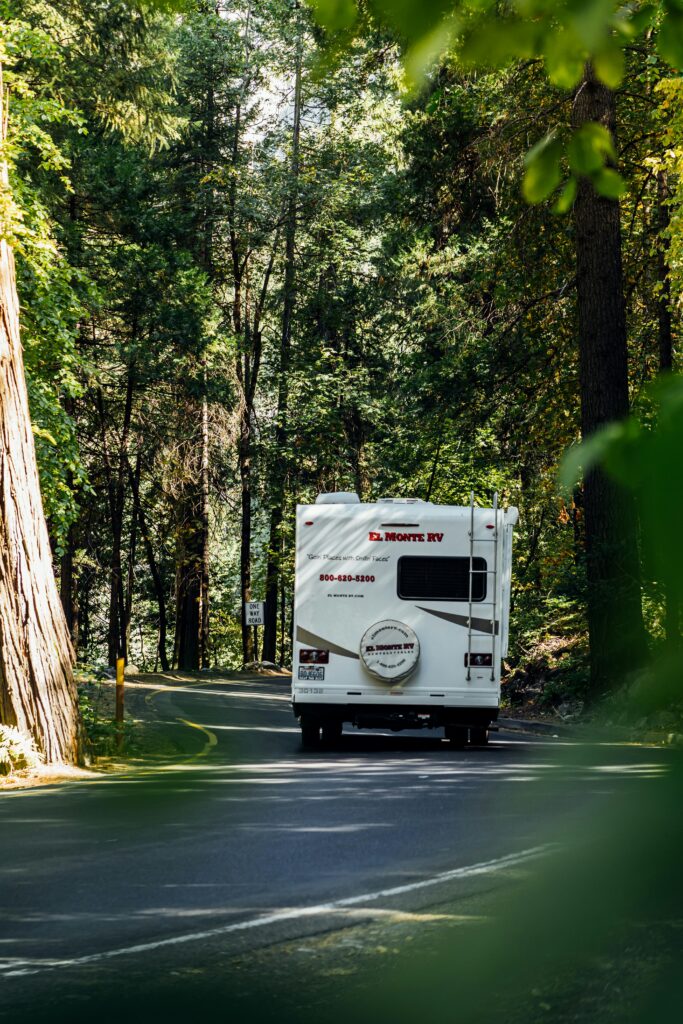How to Drive an RV: Tips for First-Time Drivers
Driving an RV for the first time can be intimidating, but with the right preparation and techniques, you’ll be navigating the open road like a pro in no time. RVs are larger and handle differently than regular vehicles, so understanding the nuances is key to a safe and enjoyable trip. Here’s a comprehensive guide to help first-time RV drivers feel confident behind the wheel.

Understand Your RV
- Know the Dimensions
Before hitting the road, familiarize yourself with your RV’s size:
- Height: Be aware of overpasses, bridges, and drive-thru clearances.
- Width: Watch for narrow roads and construction zones.
- Length: Practice turning and parking in open areas.
Check the Weight Limit
Ensure your RV isn’t overloaded. Distribute weight evenly to maintain balance and avoid issues with braking or handling.
Practice Makes Perfect
- Take a Test Drive
Spend time driving in an empty parking lot or low-traffic area to get comfortable with:
- Acceleration and braking.
- Turning radius.
- Reversing and parking.
- Adjust Your Mirrors
Properly set your side mirrors to eliminate blind spots. Consider adding rear-view cameras for better visibility.
Driving Tips for First-Timers
- Slow Down
RVs are heavier than regular vehicles, so they require more time to stop. Drive at a safe and steady speed, especially on highways and inclines.
- Use Wide Turns
Due to the RV’s length, take wider turns to avoid hitting curbs or other obstacles.
- Keep a Safe Following Distance
Maintain at least a 4- to 6-second gap between your RV and the vehicle ahead to allow for ample braking time.
- Plan Your Stops
RVs need more space to park. Research rest stops, campgrounds, and parking lots that can accommodate larger vehicles.

Navigating Highways and Cities
- Stay in the Right Lane
Driving in the right lane on highways gives you easier access to exits and reduces pressure from faster-moving traffic.
- Use a GPS for RVs
Invest in a GPS designed for RVs to avoid routes with low clearances or weight restrictions.
- Be Cautious in Urban Areas
Cities often have narrow streets and tight corners. Plan your route ahead of time and avoid rush hours.
Essential Safety Checks
- Inspect Tires
Check tire pressure and tread before every trip to prevent blowouts.
- Monitor Fluid Levels
Ensure your oil, coolant, and transmission fluids are at optimal levels.
- Test Lights and Signals
Verify that all lights, including brake lights and turn signals, are functioning properly.
Parking and Setting Up
- Choose Level Ground
Look for a flat area to park your RV. Use leveling blocks if necessary to stabilize the vehicle.
- Practice Backing Up
Reversing an RV can be tricky. Use a spotter to guide you and take it slow.
- Engage the Parking Brake
Always set the parking brake when parked to prevent rolling.
Tips for Long-Distance Trips
- Take Breaks
Stop every 2-3 hours to stretch, refuel, and rest. Fatigue can impair your driving ability.
- Stay Hydrated and Energized
Keep water and snacks handy to maintain focus during long drives.
- Plan Overnight Stops
Pre-book campgrounds or RV parks to avoid last-minute stress.

